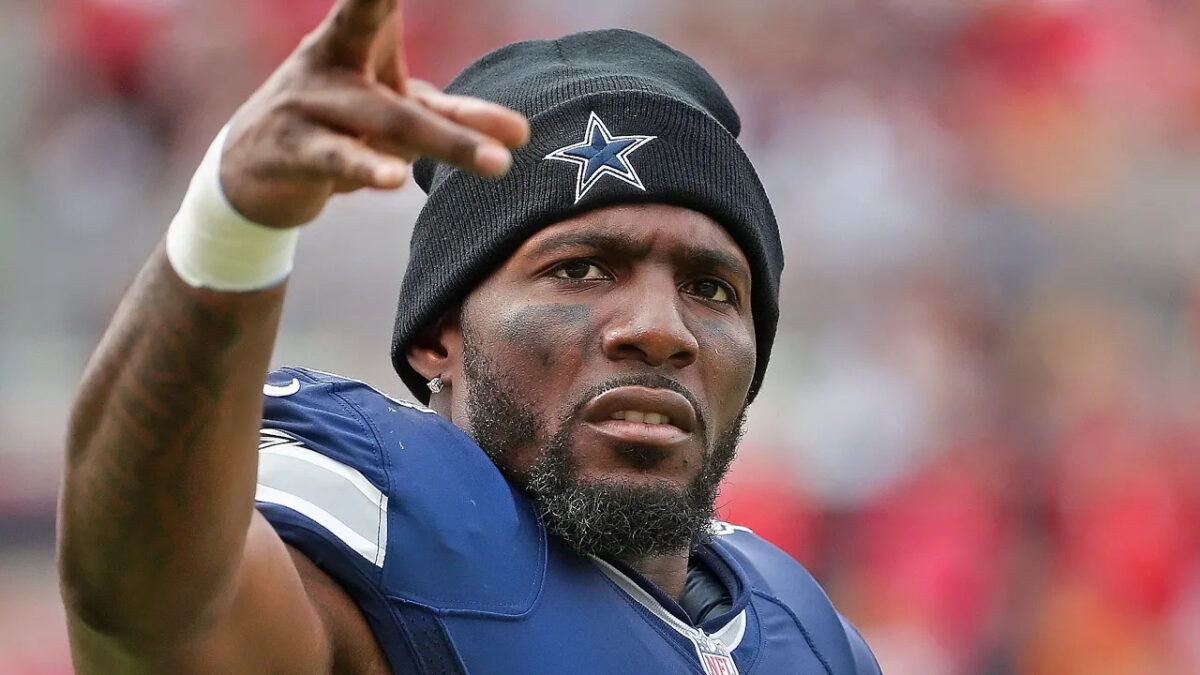
For football fans, few things are sadder than watching the rapid and unexpected decline of a superstar player.
Teh reality is that the vast majority of all-time greats just couldn’t be elite from start to finish. Almost every Hall of Famer fell off late in their career. But it’s especially difficult to see when a player goes from hero to zero in such a short period — thus preventing them from earning a spot in Canton.
Here are 10 NFL players who once looked destined for the Hall of Fame before shockingly falling off.
Albert Haynesworth
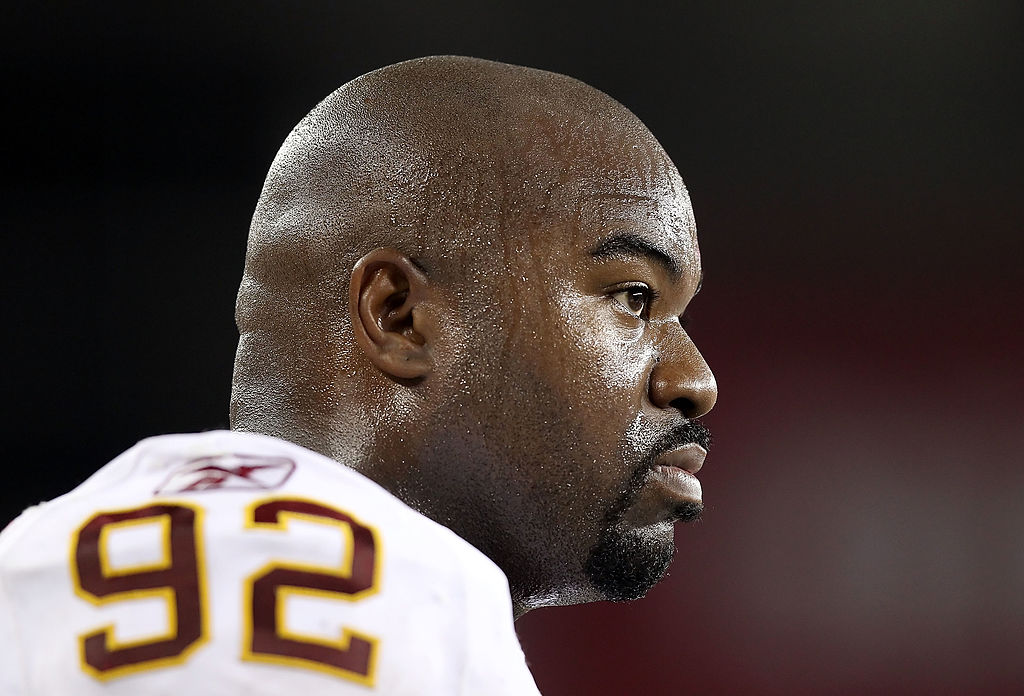
Haynesworth was one of football’s top defensive linemen during his tenure with the Tennessee Titans, which spanned from 2002 to ‘08.
The 6-foot-6, 335-pound Haynesworth earned Pro Bowl and First-Team All-Pro nods in 2007 and 2008, helping the Titans to postseason appearances both years.
In 2009 free agency, Washington signed Haynesworth to a massive seven-year deal worth $100 million. Haynesworth even turned down more money from the Tampa Bay Buccaneers, a strong indicator that he was very motivated to come to DC.
Click on ‘Follow Us’ and get notified of the most viral NFL stories via Google! Follow Us
But Haynesworth’s career fell off the tracks in a heartbeat. He showed up to Washington out of shape, voiced his displeasure over the team’s defensive schemes and often displayed no effort on the field.
The hot-headed Haynesworth just couldn’t get out of his own way. In 2011, he was traded to the New England Patriots. But even Bill Belichick couldn’t save Haynesworth, who was cut midseason after butting heads with an assistant coach.
Haynesworth was picked up by the Bucs but found no success there, either. He was out of the NFL for good after the young age of 30. You can only wonder what would have happened if he stayed with Tennessee, the one team that managed to get the most out of him.
Priest Holmes
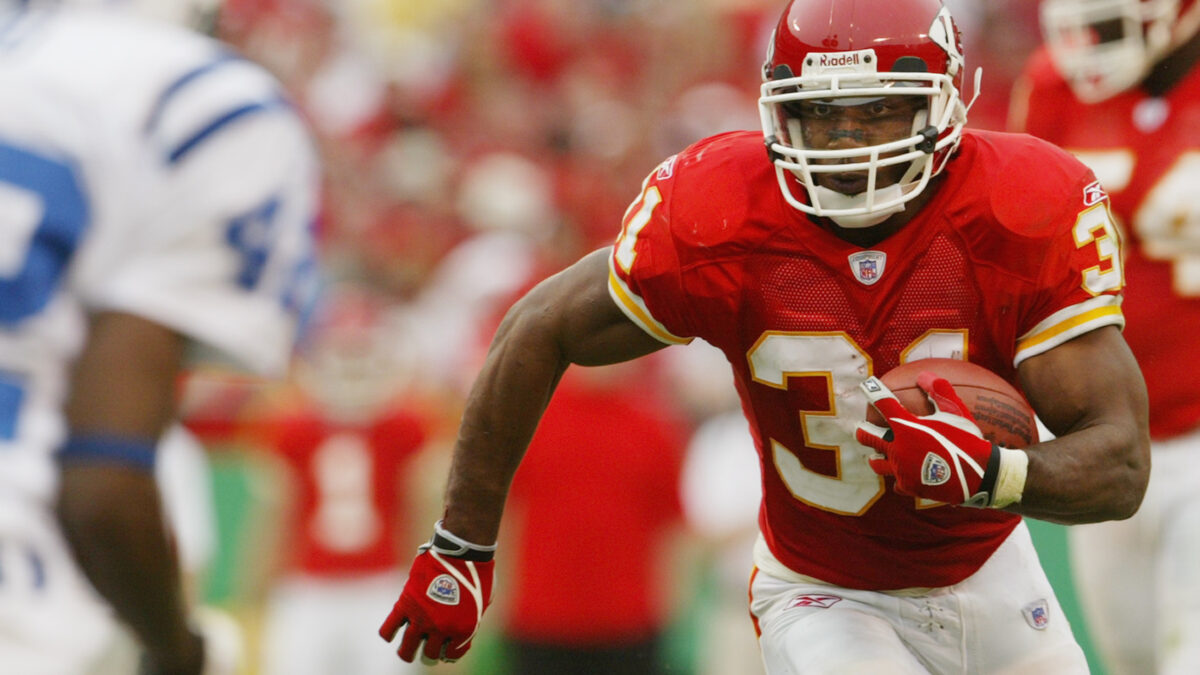
Holmes and Jamal Lewis formed one of the best running back duos ever for the Baltimore Ravens, powering the group to a Super Bowl 35 championship in the 2000 season.
The Ravens decided to move forward with Lewis as their lead back, so Holmes walked to free agency and signed with the Chiefs in 2001. The undrafted Texas product was a beast in his first three years with the Chiefs, racking up 48 rushing touchdowns alone over the 2002 and 2003 seasons.
Holmes won 2001 Offensive Player of the Year honors after winning the rushing title. He also earned three first-team all-pro nods and a trio of Pro Bowl selections, seemingly putting himself in prime position for a spot in Canton.
Holmes was having another prolific year in 2004, but a knee injury cut his season short by eight games. Sadly, the injury bug continued to bite Holmes. He missed nine games in 2005, followed by the entire ‘06 season with a spinal injury and all but four games in 2007 with a neck injury.
If it weren’t for injuries, Holmes would have surely clinched himself a spot in the Hall. One can argue that he should still be inducted…considering that Terrell Davis only had four productive seasons but still earned a gold jacket.
Nnamdi Asomugha
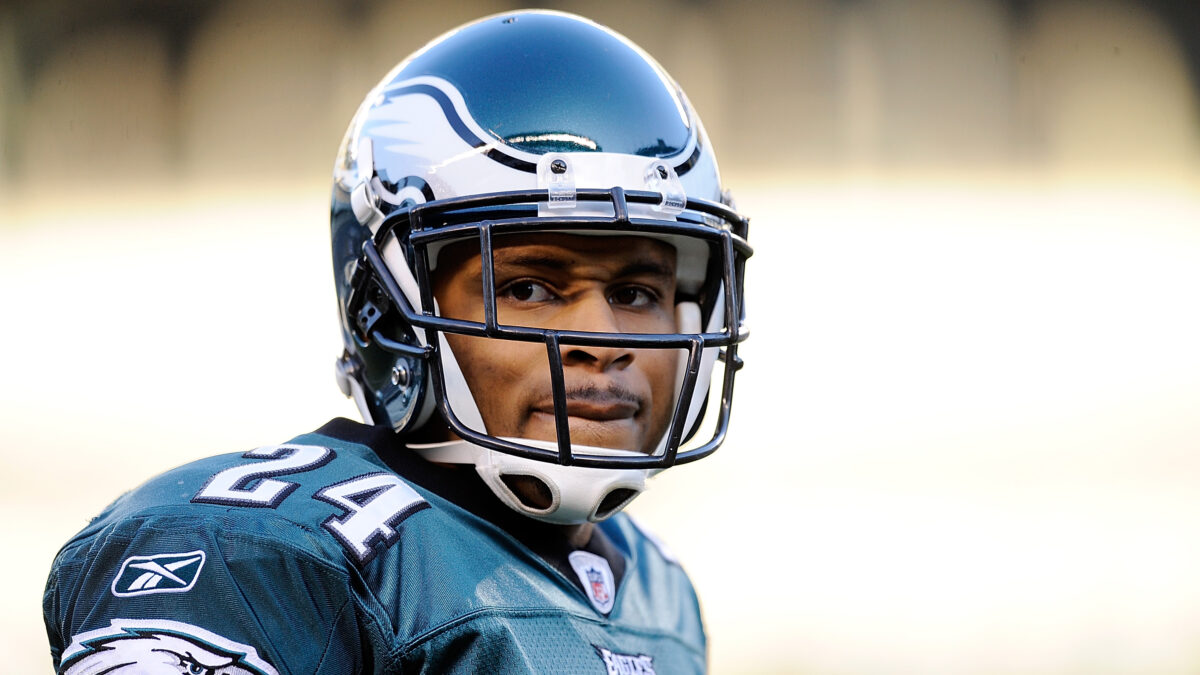
It’s hard to believe now, but Darrelle Revis once had some stiff competition for the title of the best NFL cornerback during the late-2000s.
Asomugha single-handedly shut down half the field for the Oakland Raiders during his prime, earning three Pro Bowl selections plus four all-pro nods.
In the 2011 offseason, Asomugha signed a five-year deal with the Philadelphia Eagles worth $60 million. He was one of several marquee signings the team made that year, which prompted backup QB Vince Young to proclaim them “The Dream Team.”
But Asomugha just wasn’t a fit in the Eagles’ defensive scheme. For whatever reason, he simply couldn’t adjust to their system. Philly cut Asomugha after two seasons, and a one-year stop in San Francisco did nothing to revive his career.
From being arguably the NFL’s best cornerback to out of the league within three years. An absolutely stunning downfall for a player who once looked like a lock for Canton.
Dez Bryant
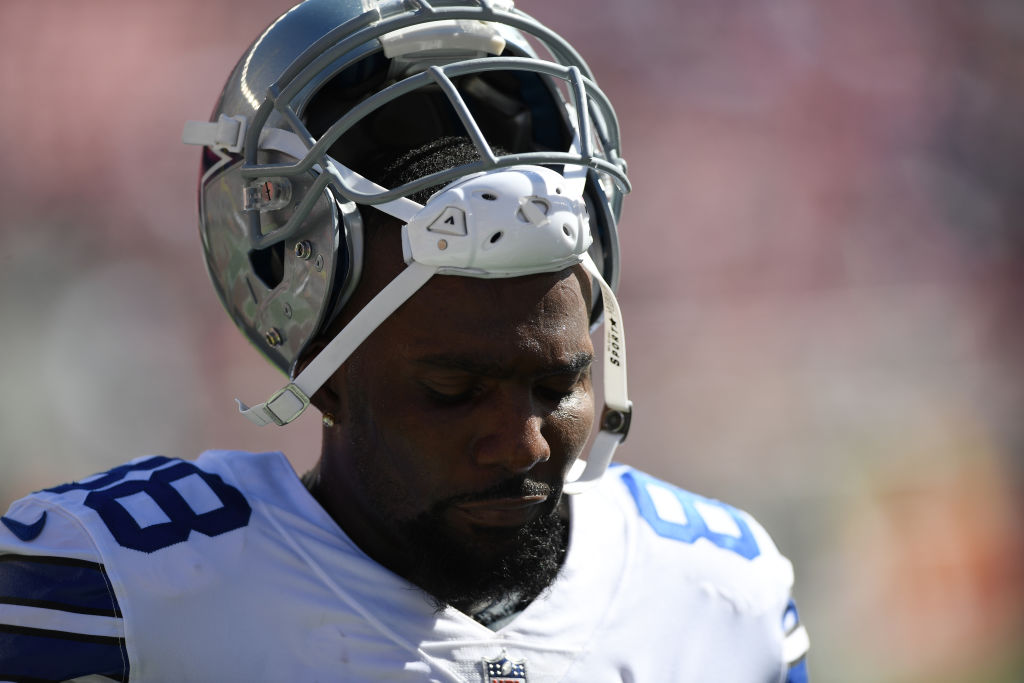
The Dallas Cowboys drafted Bryant in the first round at No. 24 overall in 2010. Bryant joined an offensive machine led by Tony Romo, Jason Witten, DeMarco Murray and fellow wideout Miles Austin.
But in short time, Dez would emerge as the new number one threat in Dallas. The 6-foot-2, 220-pound wideout racked up 50 touchdown receptions over a four-year span from 2011 to 2014 — including a league-leading 16 in 2014.
The Cowboys released the three-time Pro Bowler in a cap-saving move in 2018. He left Dallas with 7,459 receiving yards and a franchise-record 73 receiving touchdowns. Unfortunately, he was unable to add much more to his Hall of Fame resume.
Bryant took his time choosing a team in 2018 before joining the New Orleans Saints late in the year. Unfortunately, he suffered a torn Achilles in practice before ever playing a down for New Orleans, abruptly ending his season.
Bryant went unsigned in 2019 and finally returned in 2020 after signing with the Ravens. But Bryant was a shell of his former self, tallying just six receptions for 47 yards in six games. It would be his last year in the NFL.
Hindsight is 20/20, but what if Bryant didn’t take forever to choose a team in 2018? What if he signed with a club right away, avoided injury and put together a couple more 1,000-yard seasons? Then we’d be talking about a surefire Hall of Famer.
Bryce Paup
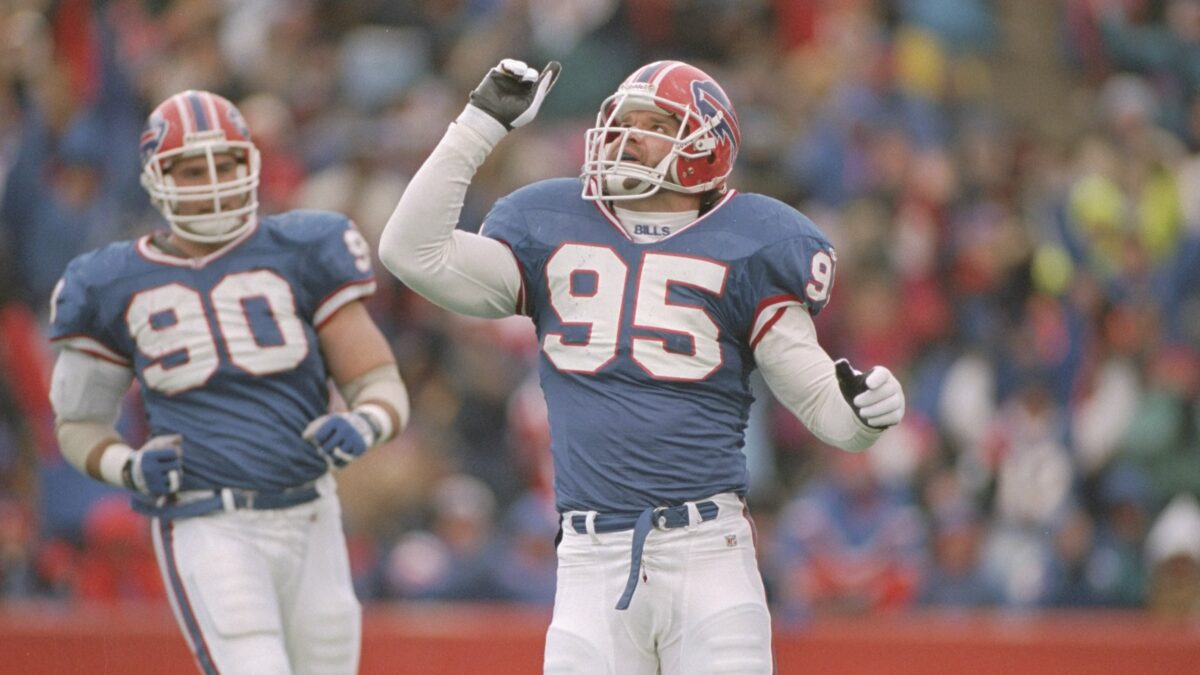
Paup didn’t get as much attention as Jim Kelly, Bruce Smith, Andre Reed and Thurman Thomas during his run with the Buffalo Bills. But the superstar linebacker was a game-changer in Orchard Park…and he was on the trail to Canton before leaving for Duval County.
Paup earned four straight Pro Bowl nods from 1994 to ‘97 and won Defensive Player of the Year honors in 1995 after leading the NFL with 17.5 sacks.
In 1998, the Jaguars signed Paup to a $22 million contract in free agency. But Paup was unable to replicate his success in Jacksonville, totaling just 7.5 sacks in two years before being released.
Paup spent one more season with the Minnesota Vikings in 2000 before retiring from football. It just makes you wonder what could’ve been if he had stayed in Buffalo, where Paup was among football’s premier defensive players.
Dana Stubblefield
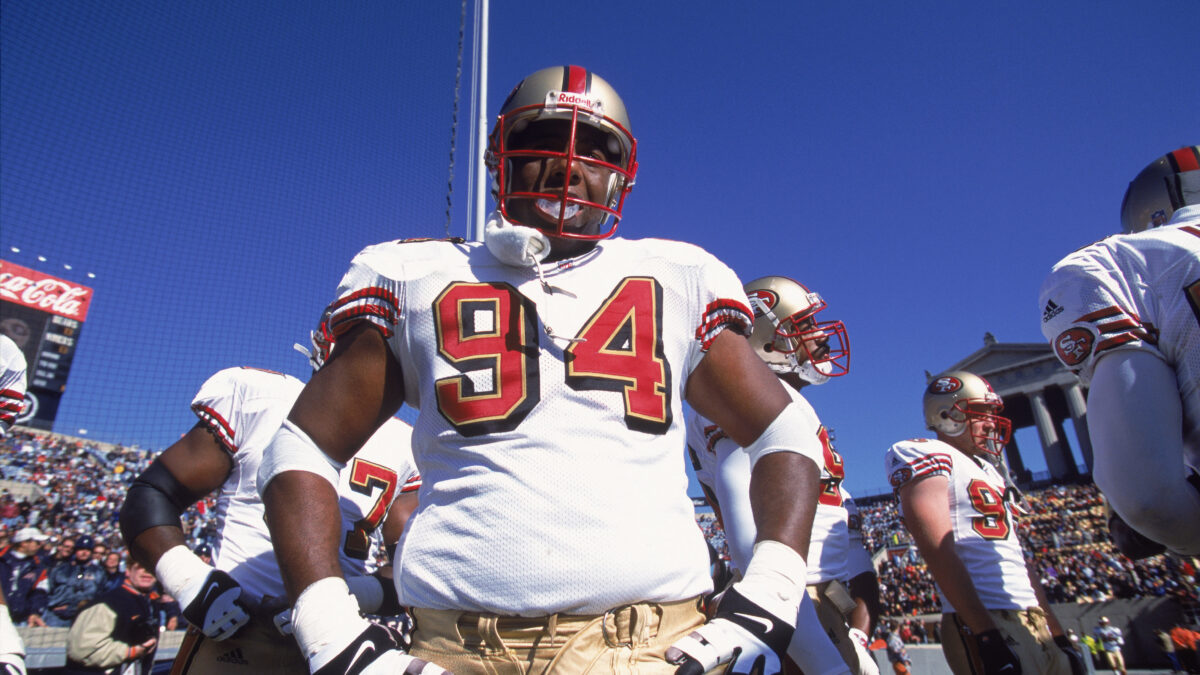
Like Paup in Buffalo, Stubblefield was overshadowed by the other major stars on his team. In this case, the San Francisco 49ers.
But the scrappy defensive tackle was a machine for the 49ers in the final stretch run of their ‘90s dynasty, helping them to a Super Bowl 29 championship in the 1994 season. Stubblefield won Defensive Rookie of the Year honors in 1993 and Defensive Player of the Year honors in ‘97.
After recording a career-high 15 sacks in ‘97, the three-time All-Pro signed with Washington in free agency. But Stubblefield was barely a factor in DC, logging just seven total sacks in three years there.
The 3-time Pro Bowler returned to San Fran for two more years — 2001 and ‘02 — but was well past his prime by then. A one-year stop with the Raiders in 2003 didn’t amount to much, either, unfortunately—leaving him just short of a spot in the Hall of Fame.
Aldon Smith
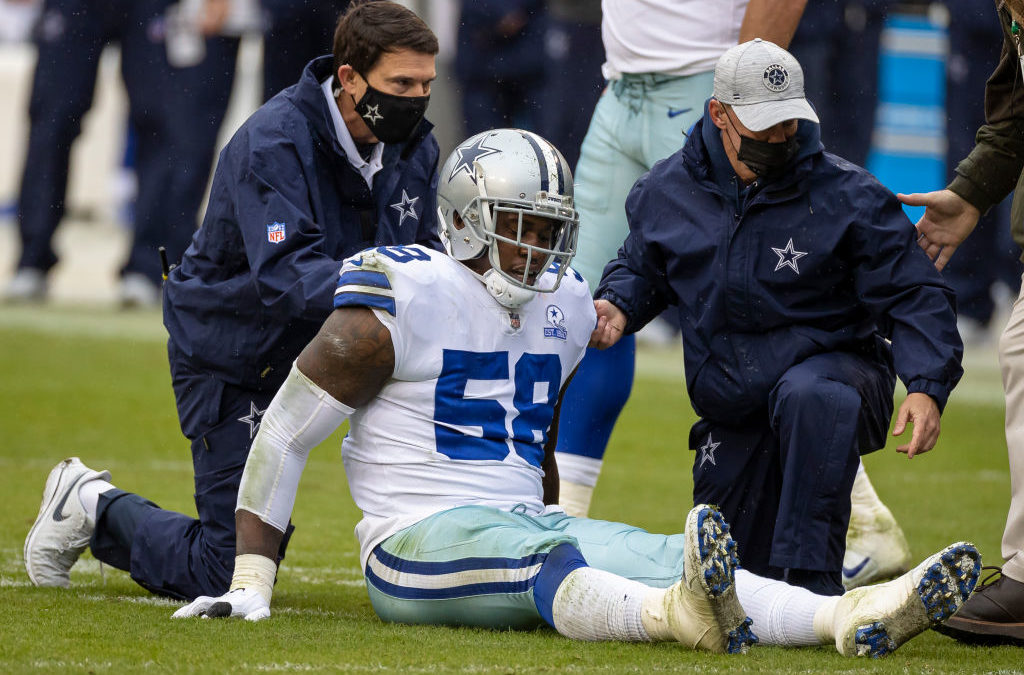
Aldon and the other Smith — fellow pass-rushing specialist Justin Smith — were big-time playmakers on the San Francisco 49ers’ star-studded defense during the short-and-sweet Jim Harbaugh era.
As a rookie in 2011, Smith racked up 14 sacks, four pass defenses and two forced fumbles — helping San Fran to an NFC title game appearance. As a sophomore, Smith had a whopping 19.5 sacks and three forced fumbles. The 49ers reached Super Bowl 47 and narrowly lost a heartbreaker to the Ravens.
Though he missed five games in 2013, Smith tallied 8.5 sacks and helped the 49ers reach a third straight NFC Championship Game. Having accomplished so much at the age of 24, Smith sure looked destined for the Hall of Fame.
But in 2015, the 49ers released Smith following a DUI arrest. He eventually signed with the Raiders but tallied just 3.5 sacks in nine games. Off-the-field arrests and more troubles led to suspensions that kept him out of football for the next four years.
The Dallas Cowboys gave Smith another chance and signed him to a contract in 2020. He looked solid with five sacks in 16 games but never ended up playing in the NFL again.
What can we say other than it’s a true shame that Smith couldn’t keep it together, and that he let his own legal issues prevent what could have been an all-time great career?
Daunte Culpepper
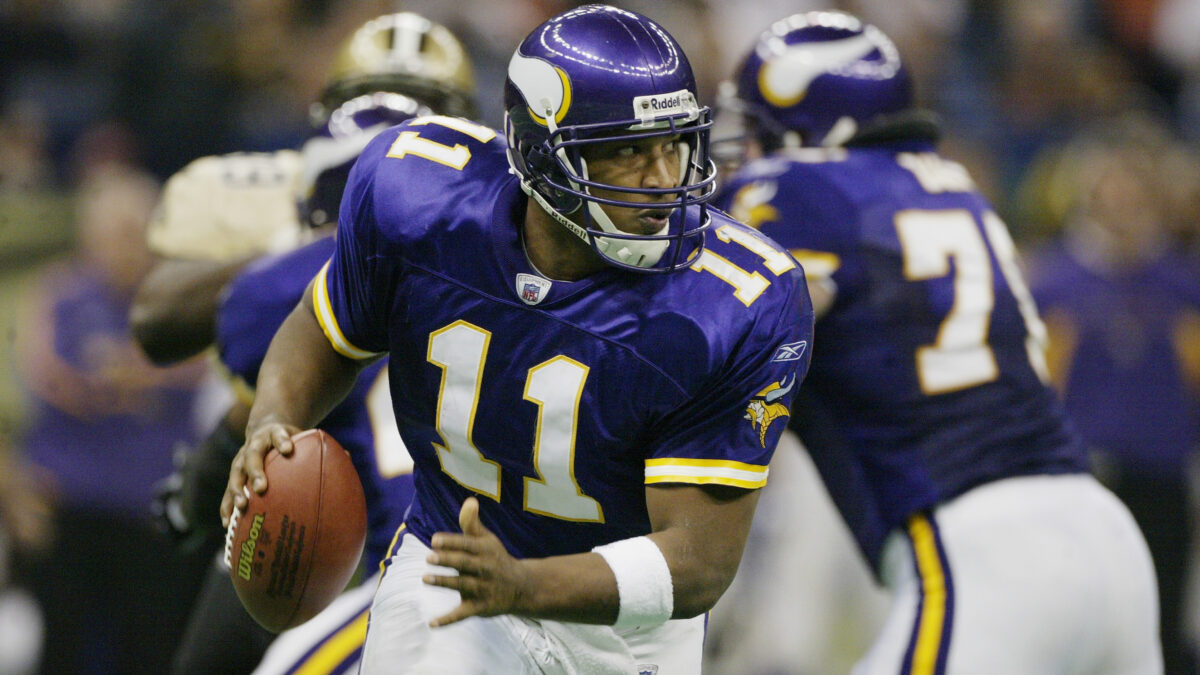
The Vikings had a smooth transition from the post-Randall Cunningham era thanks to the emergence of Culpepper — the No. 11 selection in the 1999 draft.
Culpepper took over as Minny’s starting QB in 2000, tossing a league-leading 33 touchdowns and helping the Vikings to an NFC Championship Game appearance. Culpepper earned Pro Bowl selections in 2000, ‘03 and ‘04 and helped them to a pair of postseason appearances.
Culpepper and Randy Moss were a virtually unstoppable combo. But once Moss was traded to Oakland in 2005, that was it for Culpepper’s Hall of Fame hopes.
Culpepper appeared in just seven games in an injury-plagued 2005 season. Unhappy with his contract, he sought a trade and was sent to the Miami Dolphins during the 2006 offseason.
Injuries limited Culpepper to just four games in Miami, and the team decided to cut bait after the season. He had brief stops in Oakland and Detroit, but neither of those lousy clubs could salvage his career.
If Culpepper stayed in Minny — and if they had never traded Moss — he’d surely be a proud owner of a gold jacket by now…don’t you think?
Wes Welker

If only Welker had joined the Patriots sooner….Or if only he finished his career there.
The Patriots acquired Welker from the Miami Dolphins in a trade during the 2007 offseason. After joining New England, the dynamic special teams’ weapon quickly grew into a five-star slot receiver. With the Patriots, he racked up five 100-catch/1,000-yard seasons in Foxborough.
Welker was instrumental in the Patriots’ perfect 16-and-0 regular season in 2007. He also helped them to Super Bowl 42 and 46 appearances, both losses to the New York Giants.
After failing to agree on a new contract with the Pats, Welker joined Peyton Manning and the Denver Broncos on a two-year deal in free agency. Those Broncos smashed the ‘07 Patriots’ record for points scored in a season and reached the Super Bowl, but they were crushed by the Seattle Seahawks.
One problem for Welker: Denver was loaded with weapons, including Demaryius Thomas, Julius Thomas and Eric Decker—meaning Welker couldn’t put up those Pro Bowl-like stats. And then he was suspended two games in 2014 for violating the league’s PEDs policy.
Welker had a forgettable final year in Mile High City and spent one last season with the St. Louis Rams in 2015. He had just 102 receiving yards in eight games and called it quits soon after.
Welker was probably two or three more good seasons away from locking down a Hall of Fame bust. But once he got busted for PEDs, that was pretty much it. At least he has since found success as a wide receivers coach around the league.
Shaun Alexander
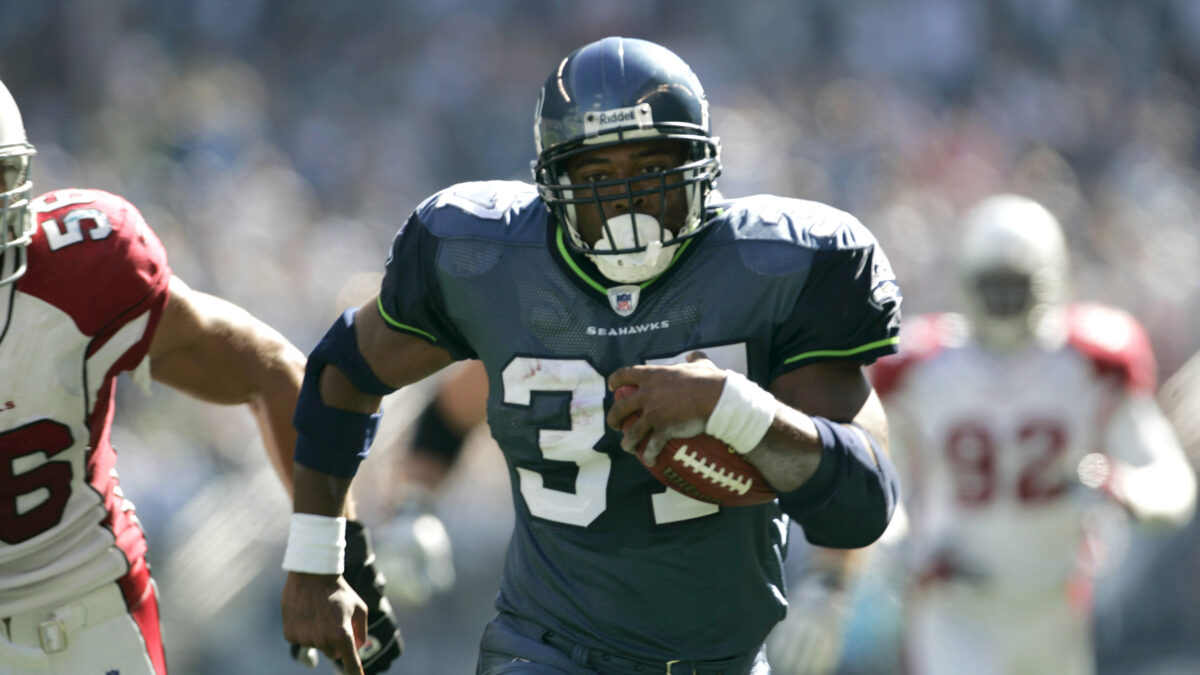
The superstar running back was so close to cementing his case as a Hall of Famer.
From 2001 to ‘05, Alexander was arguably the best running back in football. He racked up five straight seasons of over 1,100 rushing yards. That of course included his 2005 MVP-winning season, in which Alexander tallied 27 rushing touchdowns and 28 total scores — a record that was broken by LaDainain Tomlinson a year later.
Alexander and Matt Hasselbeck turned the Seattle Seahawks into an NFC juggernaut and guided them to a Super Bowl 40 appearance, where they fell to the Pittsburgh Steelers. Sadly, Alexander’s 2005 season was also his last elite one.
Despite missing six games in 2006, Alexander still tallied 896 rushing yards and seven rushing touchdowns. Unfortunately, injuries continued to plague him in 2007 — and Alexander had just 716 rushing yards in 13 games.
The Seahawks wound up moving on from Alexander, who signed with Washington in 2008. He suited up in just four games and had a mere 24 rushing yards on 11 carries.
Like Priest Holmes, we’d happily make the case that Alexander should still be in the Hall of Fame anyway. But we know this: If he hadn’t fallen off so abruptly, he certainly would have done enough to earn his place in Canton.
Which other NFL players looked destined for the Hall of Fame before shockingly falling off?


